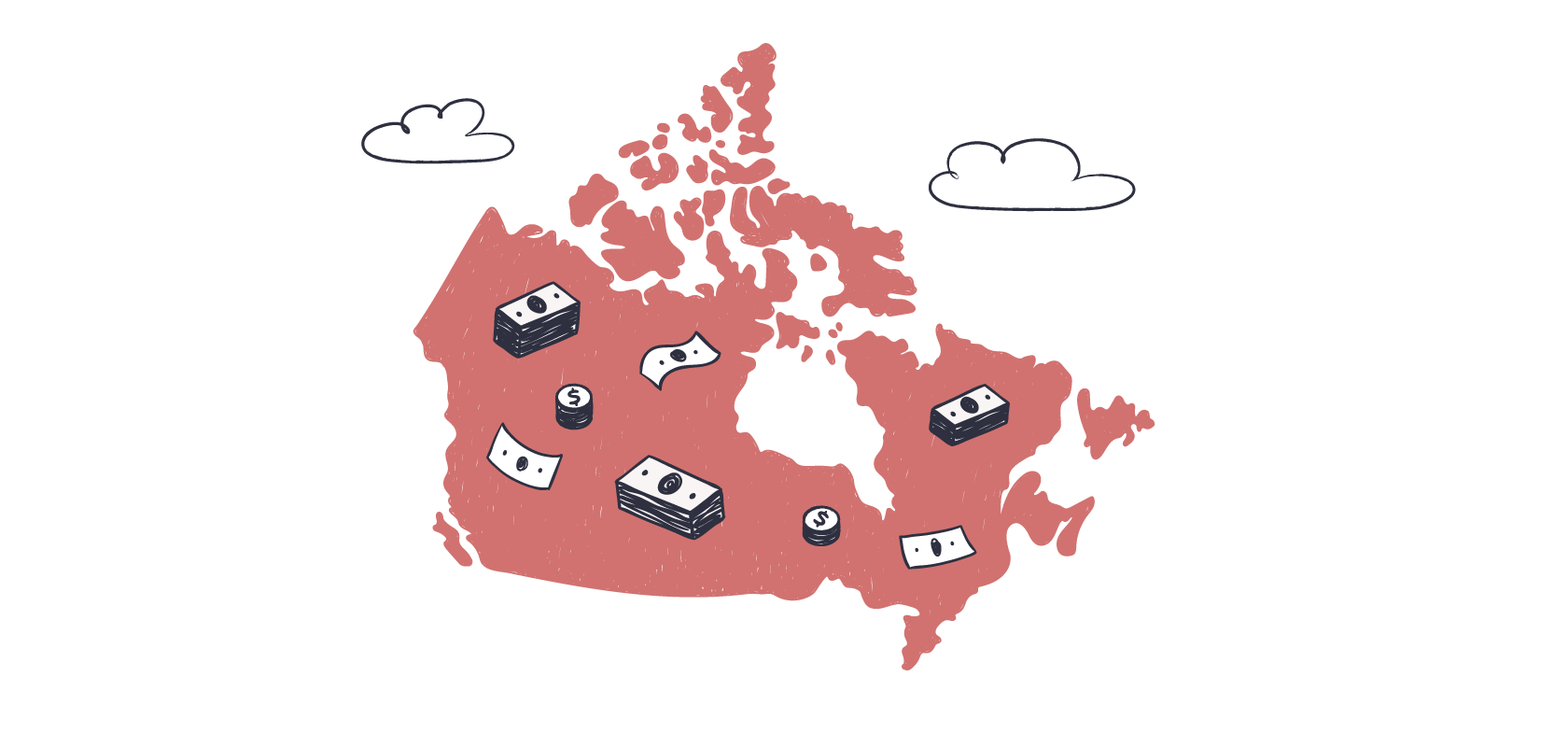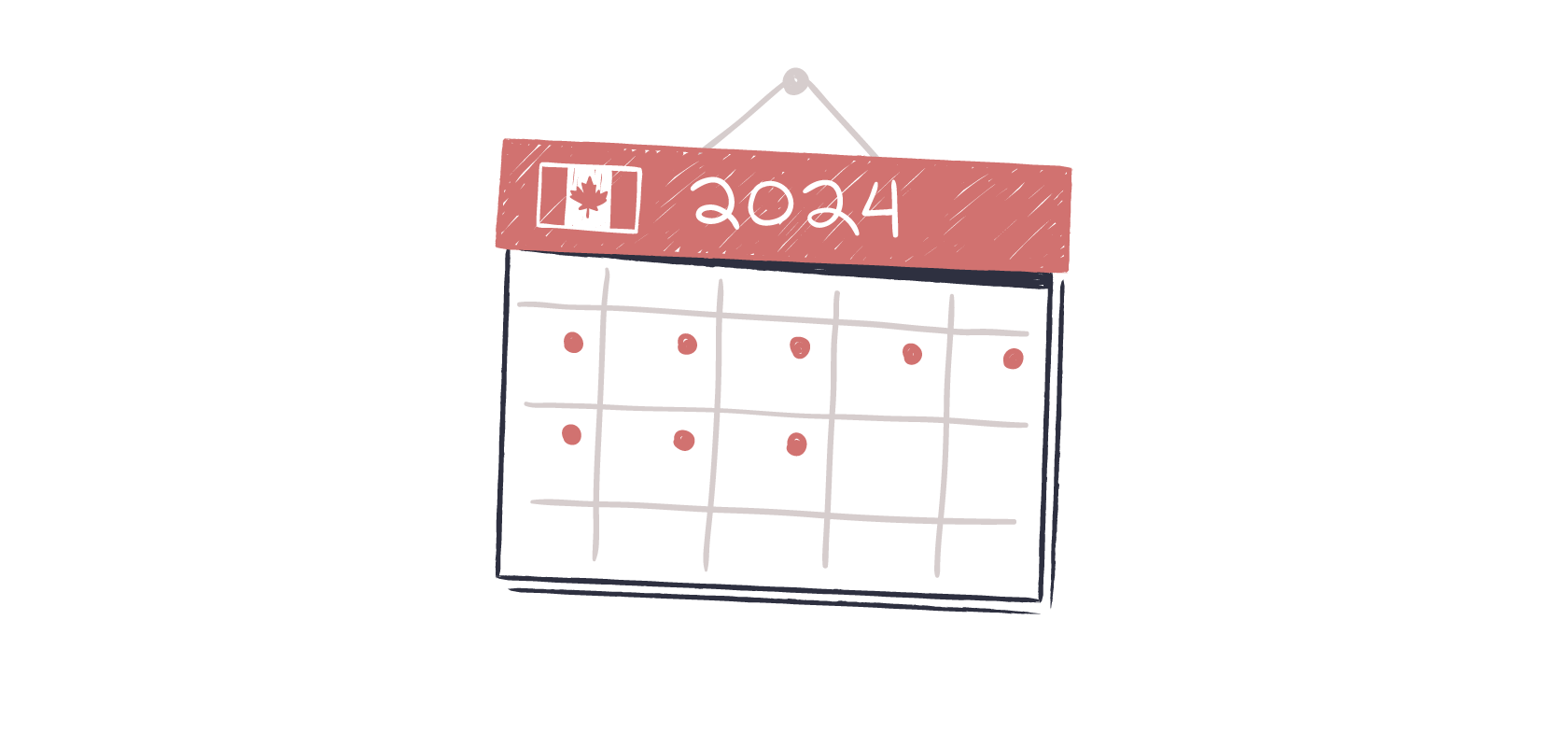Become an insider!
Get our latest payroll and small business articles sent straight to your inbox.
If you loathe spending hours on tax forms (and who doesn’t) you might be dreading having to deal with TD1 forms. These might seem like yet another admin task to put on your never-ending to-do list, but they play an essential role in determining how much tax you need to keep back from employee wages to pay the government.
In this article, we’re looking at the importance of TD1 forms as a small business owner, what to include in each form and your responsibilities when it comes to updating and filing them. Tax stuff will never be “fun,” but with this simple guide we hope we can make your life a bit easier!
What is a TD1 form and why is it so important?
The TD1 form is the more casual term for the Canada Revenue Agency (CRA) TD1 Personal Tax Credits Returns form. Employers collect these forms from their employees to figure out how much tax they need to collect when they run payroll so they can send the right amounts to the CRA. These tax deductions take into account both wages and additional income earned.
Working with TD1 forms is fairly simple. They aren’t sent to the CRA, nor does the employee use them for their taxes — it’s just for employers to make their income tax calculations and input the right TD1 code.
In addition to the federal TD1, employees also need to fill out their relevant provincial TD1 form. Both these forms are given out by employers to employees when they start a new job and at the beginning of every calendar year.
Employees need to complete and submit both federal and provincial forms to their employer whenever they:
- Begin a new job
- Want to increase the amount of tax deducted from their pay
- Want to claim extra deductions
- Have significant life changes (like going back to school, taking care of a dependent, etc.)
If an employee doesn’t hand in their TD1s, employers can deduct tax based on the default amount set by the CRA for each year. Employees working two jobs are only allowed to claim tax credits on one of their TD1 forms.
Key components of the TD1 form.
While they might seem like a cruel and unusual torture, TD1 forms are one of the “easier” forms to deal with in your small business. If you haven’t come across one before, here’s what your employees need to include when they’re completing their federal and provincial forms to hand over to you.
Personal information
Employees will fill out basic personal information including their:
- Full name
- Address
- Social Insurance Number (SIN)
- Marital status
- Number of dependents
Federal and provincial tax
Your employees will need to provide details of any tax deductions or credits they might be eligible for. The more tax credits they claim, the less they’ll have deducted from each pay cheque and the more money they’ll have to live on.
If employees don’t hand their TD1 forms in, they could be missing out on extra money. However, they’ll get any over-deducted amounts credited to them at year-end when they file their taxes.
The standard credits that can be claimed are:
Basic personal amount (BPA): This is a non-refundable tax credit that can be claimed by all employees. When an employee has taxable income lower than the BPA, they won’t be taxed as much at the federal level. It also provides a partial reduction to employees with any taxable income above the BPA.
Under Canada’s Federal Income Tax Act, these amounts are adjusted for inflation each calendar year, which is why it’s important for employees and employers to keep their TD1 form information up-to-date.
Pension income: Employees can receive deductions for regular payments they make to a pension plan or retirement fund (not including the Canada Pension Plan (CPP), Québec Pension Plan (QPP), old age security or guaranteed income supplement payments) up to a threshold amount that’s set by the government each year.
Canadian Caregiver Amount: You employee must fill in this section if they have a child (or children) under the age of 18 with disabilities or a spouse or dependent that relies on their care.
Additional tax deductions
In addition to the main tax deductions, employees might also be able to claim back amounts for things like:
- Tuition fees
- Political contributions
- Dividends
- Disability amounts
Page 2 of the federal TD1 Form
Employees should read page 2 of the federal TD1 before filling anything out as it includes all the information they need to know.
Employees will also want to pay attention to the extra checkboxes on the second page, such as:
- If they’re already claiming the basic exemption with another employer, so they won’t be claiming it twice.
- If they want extra income tax withheld for each pay period.
- Whether their total income amount is less than the claim amount.
Note: there is no page 2 on the provincial TD1 forms
Employer responsibilities regarding TD1 forms.
As an employer, it’s your responsibility to ensure you give every employee a federal and provincial TD1 form to fill out. It’s then the employee’s responsibility to complete it and give it back to you.
If they overlook handing it in, the BPA will be applied to their tax return, and they’ll miss out on the opportunity to claim tax credits until year end when they file their personal taxes. It’s not your responsibility to chase your employees for these forms, but if you want to, you could give them a little nudge if you think they have overlooked them.
Employees can be fined by the government if they don’t fill in their TD1 each year. The penalty is $25 for each day until they provide the completed form, up to a maximum fine of $2,500.
Collecting completed TD1 forms
At the start of each year, you’ll want to give all your employees a new TD1 form to fill out in case their tax circumstances or personal details have changed.
You’ll also need to collect updated forms when an employee:
- Begins working for you
- Needs to change their amount of income
- Wants to increase the amount of tax deducted at source
- Starts to receive pension payments
- Moves into a prescribed zone and wants to claim deductions for this
- Has a significant life change
Ensuring accurate tax deductions
Based on the information your employees do (or don’t) provide on their TD1 forms, you can ensure accurate tax deductions are made from payroll.
If you’re using a payroll software like Wagepoint, you can choose Code 1 (the most commonly used code to claim Basic Amounts) and the system will calculate your inputs from there. (Easy peasy!)
Otherwise, all you need to do is take your employees’ TD1 information and enter it into the employee tax information tab. Wagepoint also allows you to automate calculations after employees have submitted their TD1 forms in accordance with their level codes.
The codes chosen within the system on the employee tax info page don’t automatically reset. They stay the same until you make any changes yourself, but the amounts related to the code chosen may get updated.
With that in mind, it’s important that you remember to hand out new forms to start the year off with the right tax details in your payroll system.
A tale of two forms.
Once again, make sure you’re giving your employees both a federal and provincial TD1 form to fill in.
The reason for needing two forms is that provincial and federal tax rates are different, and employees need to pay both of these tax amounts each year.
Since they’re updated each year, you can find the Federal and Provincial TD1 forms for the current tax year here:
If you want to save some trees and printer ink, the CRA also provides TD1 forms in alternate formats such as electronic forms. There are also digital audio, braille, and large print formats to allow employees with different accessibility needs to complete their forms successfully.
Federal TD1 forms
These are the same for every employee in Canada, regardless of where they live. The Federal TD1 forms are used to calculate Federal income tax.
Government tax rates and BPA amounts are constantly changing to allow for inflation and cost of living, so it’s important you know what the current BPA amounts are for each calendar year.
Provincial TD1 forms
These are used to calculate an employee’s provincial income tax. Provincial tax rates and BPA amounts differ across the country, and your employees need to ensure they’re filling out the right form at the start of each year, especially if they’re working remotely for your business.
Employees must fill out a Provincial TD1 form based on where they work, not where they live. So if your employee lives in Alberta, but works for your business in Ontario and is paid out of the office in Ontario, then you need Ontario’s form.
Concluding TD1 forms.
Collecting and updating TD1 forms may seem like a minor admin task, but they’re an essential part of running payroll. Luckily, they’re also a pretty simple one.
They help you keep back the correct amount of tax to pay to the CRA, reducing your risk of any unpleasant surprises at tax time and ensuring your business is running smoothly.
Being proactive about managing your TD1 and payroll responsibilities ultimately benefits both you and your employees. Keeping your TD1 forms up to date ensures that you’re always compliant with Canadian legislation and that your employees are able to claim the correct tax entitlements in their tax returns.
If you’re looking for payroll software that can automate TD1 form calculations for your employees, sign up for Wagepoint to learn more. We can help you fill in all the business, tax and employee information you need to get everything running smoothly.











